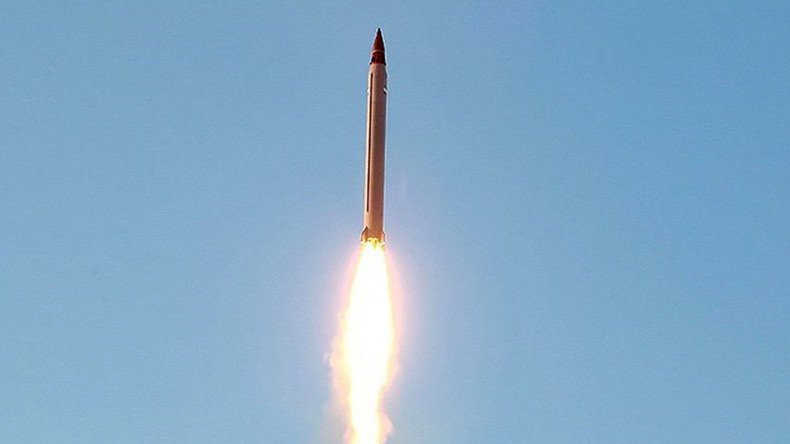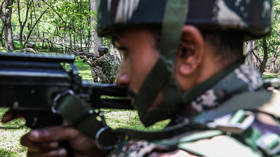Emad for it: Iran unveils underground ballistic rocket launch site

The Islamic Republic has revealed a second launch site of its first-ever guided ballistic missile, Emad. The UN Security Council last month concluded that Emad could carry a nuclear payload, and violates a 2010 resolution.
Parliamentary speaker Ali Larijani was seen touring the new facility, operated by the elite Revolutionary Guards, in a state television report broadcast on Tuesday. The report, and local news agency bulletins which followed, did not give out the name or location of the depot, mentioning only that it was located “underground” and “in the mountains.”
#Iran transferred batch of Emad missiles to new underground missile town.
https://t.co/JXs8IkSJIepic.twitter.com/boyZI3FaMs
— Fars News Agency (@EnglishFars) January 5, 2016A top Iranian official recently boasted that the Emad is capable of reaching targets of up to 2,000 km away, with “unerring accuracy,” and officials previously stated that it could be delivered from as many as 14 silos across the country.
Iran staged a surprise test launch of the first Emad rocket from a different underground location in October, prompting the UN Security Council to gather a panel to investigate whether it contravened existing resolutions.
Its report, produced last month, said the launch was in violation of Security Council resolution 1929, which bans Iran from launching a payload of over 500 kg over a distance in excess of 300 km, using a high-arc ballistic trajectory, all factors sufficient for the delivery of an effective nuclear strike. It was concluded the Emad easily outperformed those minimum requirements, as had other missiles tested in 2012 and 2013.
Resolution 1929 will, however, be superseded by the much-heralded UN-backed nuclear deal, concluded last July, between Tehran, and six leading world powers, which has not yet come into effect. That document calls upon Iran to “refrain” from launching ballistic missiles “designed” to carry nuclear weapons for at least eight years.
Iran has argued that the Emad and other missiles are not specifically “designed” to deliver nuclear warheads, and are, in essence, conventional weapons, to which it is entitled like any other nation in the region. Iran’s Supreme Leader Ayatollah Ali Khamenei, and other top-ranking officials have said that any additional sanctions as a result of the launch could scupper the landmark agreement, which is likely to come into force early this year, if Iran passes all inspections.
In December, President Hassan Rouhani wrote in an open letter that “the armed forces need to quickly and significantly increase their missile capability,” in response to the “hostile policies and illegal meddling” of the United States.
Last week, a senior official in the Revolutionary Guards claimed that Iran now has so many missiles, it has run out of storage space for them in its existing facilities.
In view of the latest footage, the US said that only "technical issues" are preventing the imposition of new measures
"We are fully prepared to use sanctions with respect to this most recent ballistic missile test, and are still working through some technical issues there," said US State Department spokesman John Kirby.












